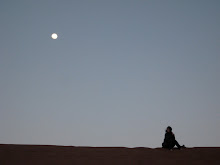Cori Olinghouse of Ninja
by Patricia MilderCori Olinghouse is among a number of artists who appropriate existing underground forms in their contemporary art and performance works. Nothing against this practice—I’m a fan, for example, of Rashaad Newsome’s high/low paper and video collages and de-contextualized abstractions of gendered movements and sounds—but when it comes to fully formed styles as fabulous as voguing and waacking, there’s really nothing like the real thing.
So it is to Olinghouse’s credit that she chose to present her new work, The Animal Suite: Experiments in Vaudeville and Shapeshifting, at Danspace in an evening length program also featuring a work by three-time House Dance International “Champion of the Year” Javier Ninja and the Grandfather of the House of Ninja (and Olinghouse’s Vogue teacher) Archie Burnett. Their piece, Elements of Vogue, was downright intoxicating. When I die and my soul is reborn, can it please be as a member of the House of Ninja? These men manage to express all the attitude and precision of hip-hop styles like breaking and locking, overlaid with a smooth, hyper-femme finish. And the drama! It’s easy to see the appeal of the form to an artist like Olinghouse, whose body spent years working Trisha Brown’s mostly desexualized, minimalist movement patterns. Also included in her evening length program was a short piece by the Japanese choreographer Kota Yamazaki. Now based in New York, Yamazaki has training in Butoh, ballet, and tutu design; his short solo was notable as much for the outrageous, kimono-like dress and bright pink wig he wore, as for his faintly creepy, slow moving Tokyo-fantasy dance.
Vogue and waacking might have been born in underground clubs and ballrooms, but these sister styles—the former originated in the East and the latter the West coast—are themselves a mash-up of elements from modern dance, Balinese dance, ballet, gymnastics, martial arts, and, of course, the emulation of supermodel and old-Hollywood glamour poses. In an interview with TV Brazil, Burnett says that waacking, in its infancy, was called “Garbo” after an icon of the times, which gives you an idea of how long its been around. (We’re talking late 1960s and ’70s, not Garbo’s heyday in the ’30s, but still.) Today these forms are completely comfortable in a setting like Saint Mark’s Church, electrifying a mixed audience of Ninja fans and contemporary dance people. The night I saw the program, the crowd was noticeably enthusiastic as Javier Ninja, with his slight yet muscular body, made his way into deep backbends and ridiculous splits; it seemed at times his arms had no bones and the normal limitations of human joints, as in knees, were a non-issue. His arms flew in fast, precise patterns around his head while Burnett strolled a slow runway walk and glanced coolly out from under dark sunglasses. Shouts of encouragement were heard from the seats: “Girl, you better work!”
And so the evening ended with high energy; out on the street after the performance, bundled-up theatergoers cut their arms through the frigid air with energetic, amateur imitations, as they made their way to somewhere warm. After a few more hours passed, however, it was Olinghouse’s thoughtful, exquisitely costumed (by Andy Jordan) work that lingered in the mind as it was intended: as the intellectual anchor for the evening-length experience. She used vogue sparingly in her piece, including it as one method of her exploration of transformation through movement and dress. In The Animal Suite, her dancers became bears and birds as she herself slid between genders in the most natural way.
Starting with men’s clothes and an old-timey straw hat, her image and footwork in a style inspired by Buster Keaton in The Playhouse, Olinghouse feminized her character as the piece slowly—sometimes a bit too slowly—progressed. Seeing vogue through her exquisitely trained body, which she had presented as masculine only minutes earlier, was destabilizing and strangely satisfying. I don’t want the nuance in her movement-based fantasy shape changing to be lost in translation: words such as “masculine” and “feminine” are finite but the expression of self and other in the body is not. She and her dancers tried on movements like they were costumes, playing openly and with varying degrees of success, with the fluidity between dance and entertainment forms, genders, and the physical expressions of various living species. Experiments in shapeshifting, indeed.
To read this review on the Brooklyn Rail website: HERE
